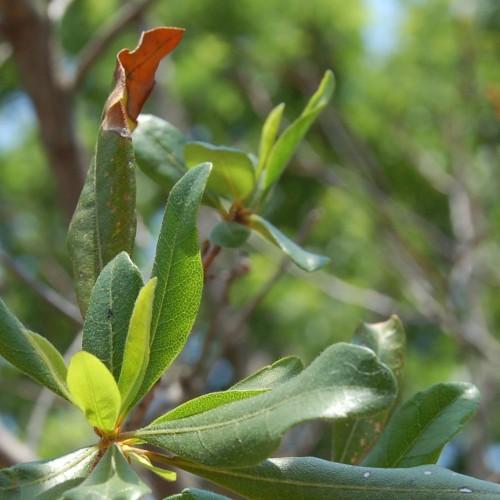
bayberry
Myrica pensylvanica 'Morton'
Cycle:
Perennial
Watering:
Minimum
Hardiness Zone:
3 - 6
Flowers:
Flowers In Spring
Sun:
Full sun,part shade
Fruits:
Fruits Ready In Fall
Leaf:
Yes
Growth Rate:
Low
Maintenance:
Low
Drought Tolerant:
Yes
Salt Tolerant:
Yes
Care Level:
Medium
watering
Bayberry (Myrica pensylvanica 'Morton') should be watered weekly in the growing season, and biweekly in the winter months. The soil should be kept moist but not overly saturated. During the hotter summer months, water thoroughly every week, soaking the soil until excess starts to run out of the bottom of the pot. During cooler months, water thoroughly every other week, allowing the water to soak into the soil before discarding any excess. During extended dry periods, water several times a week. Be careful not to overwater, as this could cause root rot.
sunlight
Bayberry requires full sun for optimum growth and fruiting. This plant should receive at least 4 to 8 hours of direct sunlight each day to bloom and bear fruit. If it is planted in a spot with light shade, it will need more sunlight to stay healthy. During the summer, bayberry can benefit from morning sun and some afternoon shade, which helps protect it from too much sun.
pruning
Bayberry trees should be pruned in late winter or early spring before new growth begins. The trees can be lightly pruned for shape and to reduce the size of long branches. Bayberry trees generally need very little pruning, as they respond best to light pruning. If extensive pruning is needed, it should be done gradually over several years in order to maintain the natural shape and reduce the risk of damaging the tree.
